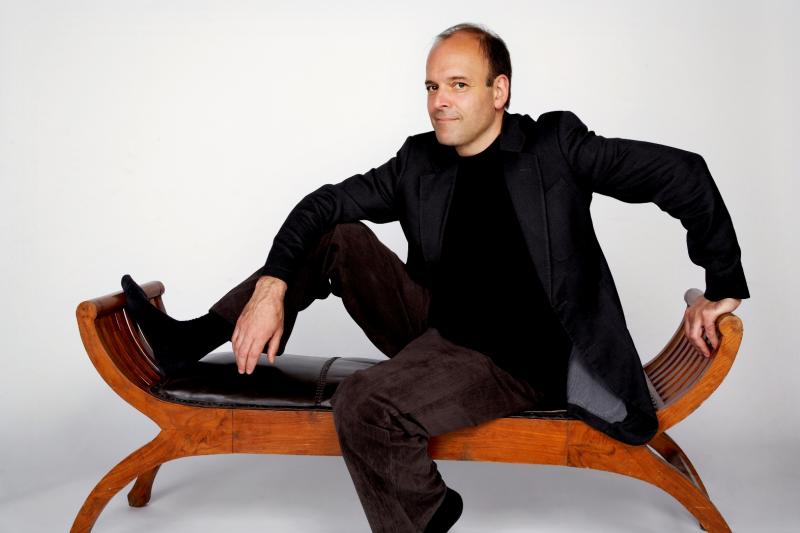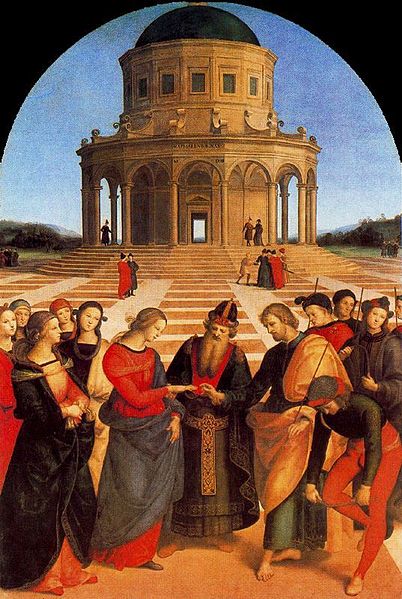Louis Lortie, Wigmore Hall | reviews, news & interviews
Louis Lortie, Wigmore Hall
Louis Lortie, Wigmore Hall
French-Canadian pianist dazzles or imposes in monumental homage to Liszt's Italian inspirations

It was Chopin time when I last heard Louis Lortie, and a typical London clash of scheduling allowed me to catch his effervescent Op 10 Études before pedalling like crazy north of the river for the second half of Elisabeth Leonskaja’s even bigger all-Chopin programme. Last night Lortie offered a comparably monumental homage to this year's bicentenary birthday boy Liszt in all his Italian-inspired variety, and there was no need to miss, or to wish to miss, a note.
Liszt did rather chuck together diverse themed pieces for his second “year” of the travelogue cycle Années de pèlerinage, but the programmatic idea – inspiration from great Italian poetry and art rather than the nature which had informed his Swiss set – makes a good sequence, if a tough one for half a concert. And Lortie, like Leonskaja, magisterially allows no fidgeting, let alone applause, between each different mood.
 The sonorous tolling that underpins the bright, lucid surface of Sposalizio, a good aural counterpart to the paradoxically vibrant calm of its Raphael source (pictured right), can effortlessly turn to stone in the funeral-march lament of Il penseroso (again, a thoughtful homage, this time to Michelangelo’s Thinker on Lorenzo de' Medici's tomb in Florence).
The sonorous tolling that underpins the bright, lucid surface of Sposalizio, a good aural counterpart to the paradoxically vibrant calm of its Raphael source (pictured right), can effortlessly turn to stone in the funeral-march lament of Il penseroso (again, a thoughtful homage, this time to Michelangelo’s Thinker on Lorenzo de' Medici's tomb in Florence).
By this stage we needed a jolly; the supposed Canzonetta of Salvator Rosa – the exuberant ditty is Bononcini’s, but never mind – bounced, but in high, lucid and bright style. Lortie’s seemingly improvisational way of moving from one idea to another – which of course was Liszt’s novelty in the 1830s and 1840s – transformed the second of the Petrarch Sonnets, already heard once or twice too often this year in performances which never joined the thoughtful dots in this way.
As for the Fantasia quasi sonata which juggernauts its way from tritonal hell to tinkling paradise, its placing as the grand sub-Dantean finale after all that Petrarchan poetry and Lortie’s seemingly four-hand clarity was almost persuasive. Almost, but I do wonder if the Fazioli instrument Lortie seems to love favours brilliance and clarity over depth of sound. That can become as wearing as Liszt’s rodomontade, and the actual substance surely isn’t a patch on the B minor Sonata to come.
The layering of water sprays once again found its equivalent in Lortie’s apparent borrowing of an extra hand or two
Which would have been a step too far in this programme. But in any case we needed to stay in Italy after the interval. The chiselled lugubriousness of two negative-image late-Venetian water pieces – one apparently anticipating Wagner’s imminent death in the Palazzo Vendramin, the other commemorating it – effortlessly linked to the graded return of the bright surface in the first of the Venezia e Napoli sequence Liszt prevaricated over adding to the second book of pilgrim years, a happy rather than a tragic gondola ride.
Heavy tragedy returns in a paraphrase on the Dante-quoting gondolier of Rossini’s Otello, and the finale’s crazily overwrought Tarantella was dashed off without hurry or bluster by Lortie as if it were the lightest of showpieces. But the real treasure, substance-wise, was the encore, the truly masterly Jeux d’eau à la Villa d’Este. The layering of water sprays in that magnificent garden at Tivoli once again found its equivalent in Lortie’s apparent borrowing of an extra hand or two, an illusion heightened by his magical ability to conjure different sonorities from the two extremes of the piano’s register.
Explore topics
Share this article
The future of Arts Journalism
You can stop theartsdesk.com closing!
We urgently need financing to survive. Our fundraising drive has thus far raised £49,000 but we need to reach £100,000 or we will be forced to close. Please contribute here: https://gofund.me/c3f6033d
And if you can forward this information to anyone who might assist, we’d be grateful.

Subscribe to theartsdesk.com
Thank you for continuing to read our work on theartsdesk.com. For unlimited access to every article in its entirety, including our archive of more than 15,000 pieces, we're asking for £5 per month or £40 per year. We feel it's a very good deal, and hope you do too.
To take a subscription now simply click here.
And if you're looking for that extra gift for a friend or family member, why not treat them to a theartsdesk.com gift subscription?
more Classical music
 BBC Proms: Ehnes, Sinfonia of London, Wilson review - aspects of love
Sensuous Ravel, and bittersweet Bernstein, on an amorous evening
BBC Proms: Ehnes, Sinfonia of London, Wilson review - aspects of love
Sensuous Ravel, and bittersweet Bernstein, on an amorous evening
 Presteigne Festival 2025 review - new music is centre stage in the Welsh Marches
Music by 30 living composers, with Eleanor Alberga topping the bill
Presteigne Festival 2025 review - new music is centre stage in the Welsh Marches
Music by 30 living composers, with Eleanor Alberga topping the bill
 Lammermuir Festival 2025 review - music with soul from the heart of East Lothian
Baroque splendour, and chamber-ensemble drama, amid history-haunted lands
Lammermuir Festival 2025 review - music with soul from the heart of East Lothian
Baroque splendour, and chamber-ensemble drama, amid history-haunted lands
 BBC Proms: Steinbacher, RPO, Petrenko / Sternath, BBCSO, Oramo review - double-bill mixed bag
Young pianist shines in Grieg but Bliss’s portentous cantata disappoints
BBC Proms: Steinbacher, RPO, Petrenko / Sternath, BBCSO, Oramo review - double-bill mixed bag
Young pianist shines in Grieg but Bliss’s portentous cantata disappoints
 theartsdesk at the Lahti Sibelius Festival - early epics by the Finnish master in context
Finnish heroes meet their Austro-German counterparts in breathtaking interpretations
theartsdesk at the Lahti Sibelius Festival - early epics by the Finnish master in context
Finnish heroes meet their Austro-German counterparts in breathtaking interpretations
 Classical CDs: Sleigh rides, pancakes and cigars
Two big boxes, plus new music for brass and a pair of clarinet concertos
Classical CDs: Sleigh rides, pancakes and cigars
Two big boxes, plus new music for brass and a pair of clarinet concertos
 Waley-Cohen, Manchester Camerata, Pether, Whitworth Art Gallery, Manchester review - premiere of no ordinary violin concerto
Images of maternal care inspired by Hepworth and played in a gallery setting
Waley-Cohen, Manchester Camerata, Pether, Whitworth Art Gallery, Manchester review - premiere of no ordinary violin concerto
Images of maternal care inspired by Hepworth and played in a gallery setting
 BBC Proms: Barruk, Norwegian Chamber Orchestra, Kuusisto review - vague incantations, precise laments
First-half mix of Sámi songs and string things falters, but Shostakovich scours the soul
BBC Proms: Barruk, Norwegian Chamber Orchestra, Kuusisto review - vague incantations, precise laments
First-half mix of Sámi songs and string things falters, but Shostakovich scours the soul
 BBC Proms: Alexander’s Feast, Irish Baroque Orchestra, Whelan review - rapturous Handel fills the space
Pure joy, with a touch of introspection, from a great ensemble and three superb soloists
BBC Proms: Alexander’s Feast, Irish Baroque Orchestra, Whelan review - rapturous Handel fills the space
Pure joy, with a touch of introspection, from a great ensemble and three superb soloists
 BBC Proms: Moore, LSO, Bancroft review - the freshness of morning wind and brass
English concert band music...and an outlier
BBC Proms: Moore, LSO, Bancroft review - the freshness of morning wind and brass
English concert band music...and an outlier
 Willis-Sørensen, Ukrainian Freedom Orchestra, Wilson, Cadogan Hall review - romantic resilience
Passion, and polish, from Kyiv's musical warriors
Willis-Sørensen, Ukrainian Freedom Orchestra, Wilson, Cadogan Hall review - romantic resilience
Passion, and polish, from Kyiv's musical warriors
 BBC Proms: Faust, Gewandhausorchester Leipzig, Nelsons review - grace, then grandeur
A great fiddler lightens a dense orchestral palette
BBC Proms: Faust, Gewandhausorchester Leipzig, Nelsons review - grace, then grandeur
A great fiddler lightens a dense orchestral palette

Add comment